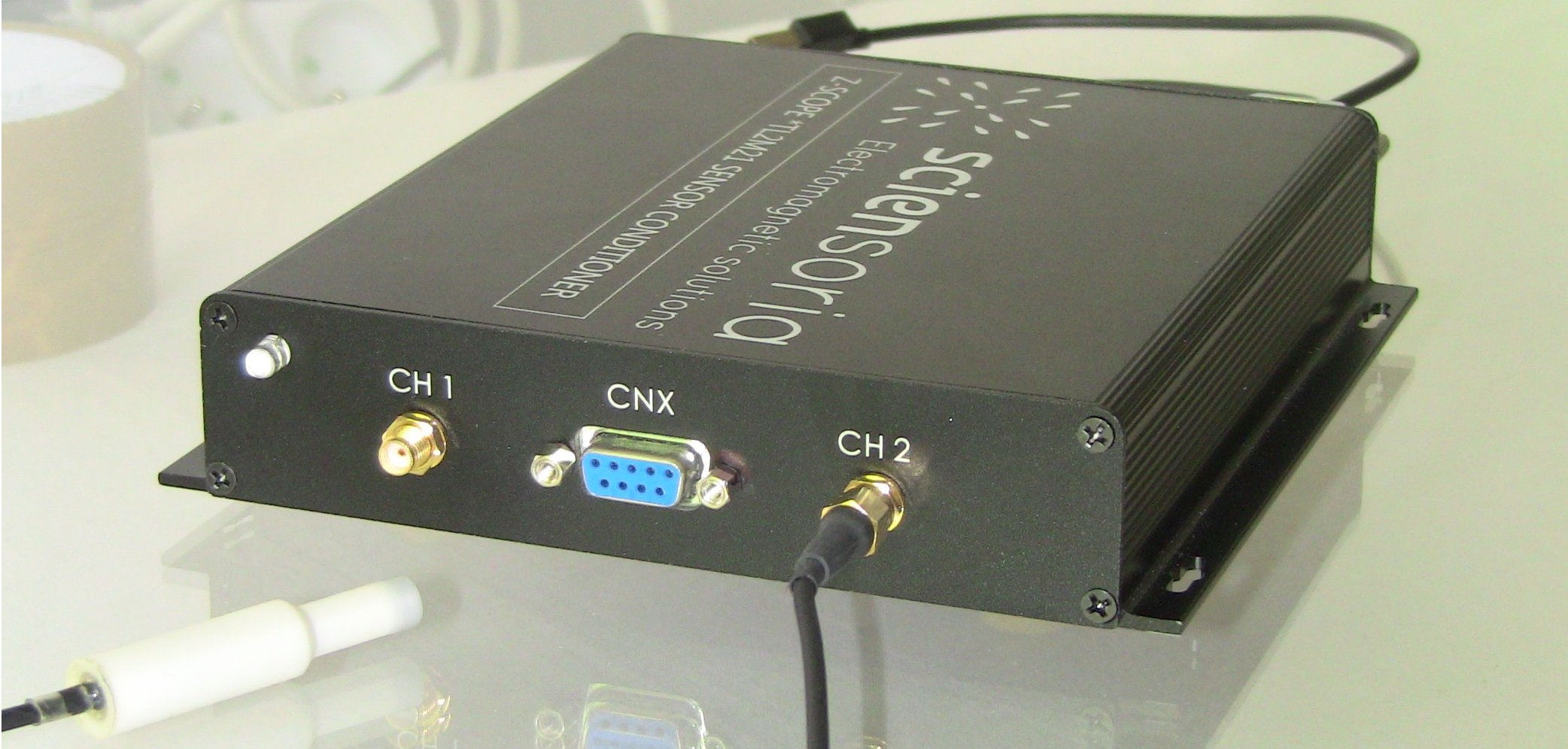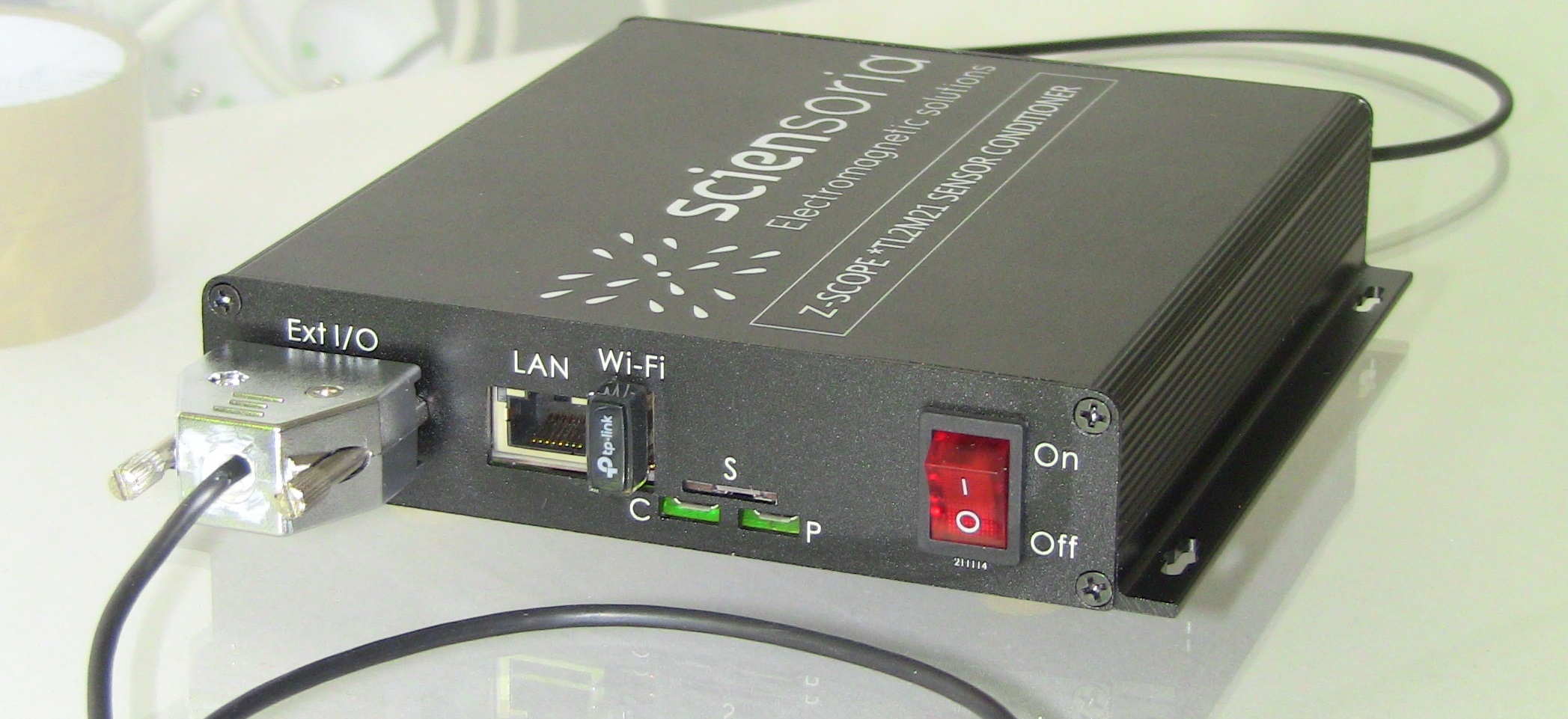40 MHz excitation frequency, Wi-Fi link for remote operations, the Sciensoria’s new Eddy Current Non-destructive Testing instrument Z-Scope *TL2M21 lets you make great applications
The new nondestructive eddy current tester from Sciensoria Z-Scope * TL2M21 is light (400 gr), with network connectivity, and above all, powerful. With a frequency range of up to 40 MHz, up to 2 input channels for 2 probes, a data rate of up to 10,000 measurements per second per WiFi link, this new model developed by Sciensoria has everything of a big. Most traditional applications can be considered with the Z-Scope * TL2M21:
- Electrical conductivity measurement
- Thickness measurement of metal objects
- Coating thickness measurement
- Detection of cracks or defects
- Assesment of quality of spot-welds
Network connectivity via the Wi-Fi or Ethernet interface gives the user great freedom of use and above all the interaction with other equipment which makes up an intelligent environment meeting the needs of Industry 4.0. The device could be used as a link in a network of IoT sensors allowing the in-depth monitoring of a process or an industrial installation.

Z-Scope *TL2M21 front view

Z-Scope *TL2M21 rear view
The Z-Scope *TL2M21 is very small and light weight, its lets us work anywhere. One can comfortably uses it on a desktop with a connected Windows PC or let it run stand-alone in a production line connected with factory PLC.
The Wi-Fi link makes it possible to install the Z-Scope *TL2M21 on moving or unaccesible systems and stay outside to get the data. This feature is valuable in many important applications such as vibration analysis on rotating machines, nuclear facilities, through-wall measurement, remote measurement, etc.
Characteristics
- Exciting frequency range: 10 kHz – 40 MHz
- Probe connection: absolute type (single coil)
- Number of input channels: 2
- On-board microprocessor: ARM-9. The on-board microprocessor performs all the necessary signal processing operations for stand-alone mode (factory mode).
- Optional logic input/output interface: 24V-compatible industrial interface with 1 opto-coupled input, 2 opto-coupled output
- Interface: USB or Wi-Fi (to be specified before purchase)
- Windows software: the WinEC(tm) software enables user to visualize, analyze and calibrate the system for measurement both in connected mode or stand-alone mode.
Examples of applications
Non-destructive testing of electrical contact pads (Métalor SA, Switzerland, https://metalor.com/)
Below is a video clip showing the nondestructive testing of electrical contact pads used in circuit breakers. An electrical contact pad has 2 sides: one side to ensure the closing / opening of the electrical circuit. It is specially treated to withstand electric arcs. The other face is covered with a layer of solder alloy and is intended to be soldered to the internal circuit of the circuit breaker.
The nondestructive test by eddy currents makes it possible to ensure the presence of the solder layer and also the correct orientation of the pads in the welding line.
This application can also be declined in control of the thickness of plating / tinning of metals, or metallization of plastic or carbon composite.
Video clip: test for the presence of a brazing layer on electrical contact pads
Nondestructive testing of spot-welds using the eddy current technique
See the Youtube video below. A small eddy current probe has been used to check the quality of spot-welds. This application is very popular in industry.
Video clip: testing of quality of electric spot-welds by the eddy current technique with the Sciensoria’s Z-Scope*TL2M21
Monitoring of excentricity of motor shaft
See the video below. An eddy current sensor is used to monitor the eccentricity of a motor shaft. Sciensoria’s Z-Scope * TL2M21 has a high capture data rate and can do the job even at high engine speed.
Video clip: monitoring of excentricity of a motor shaft
Contact us for more details and quotation
Send an e-mail to info@sciensoria.fr or use the form on the Contact page
